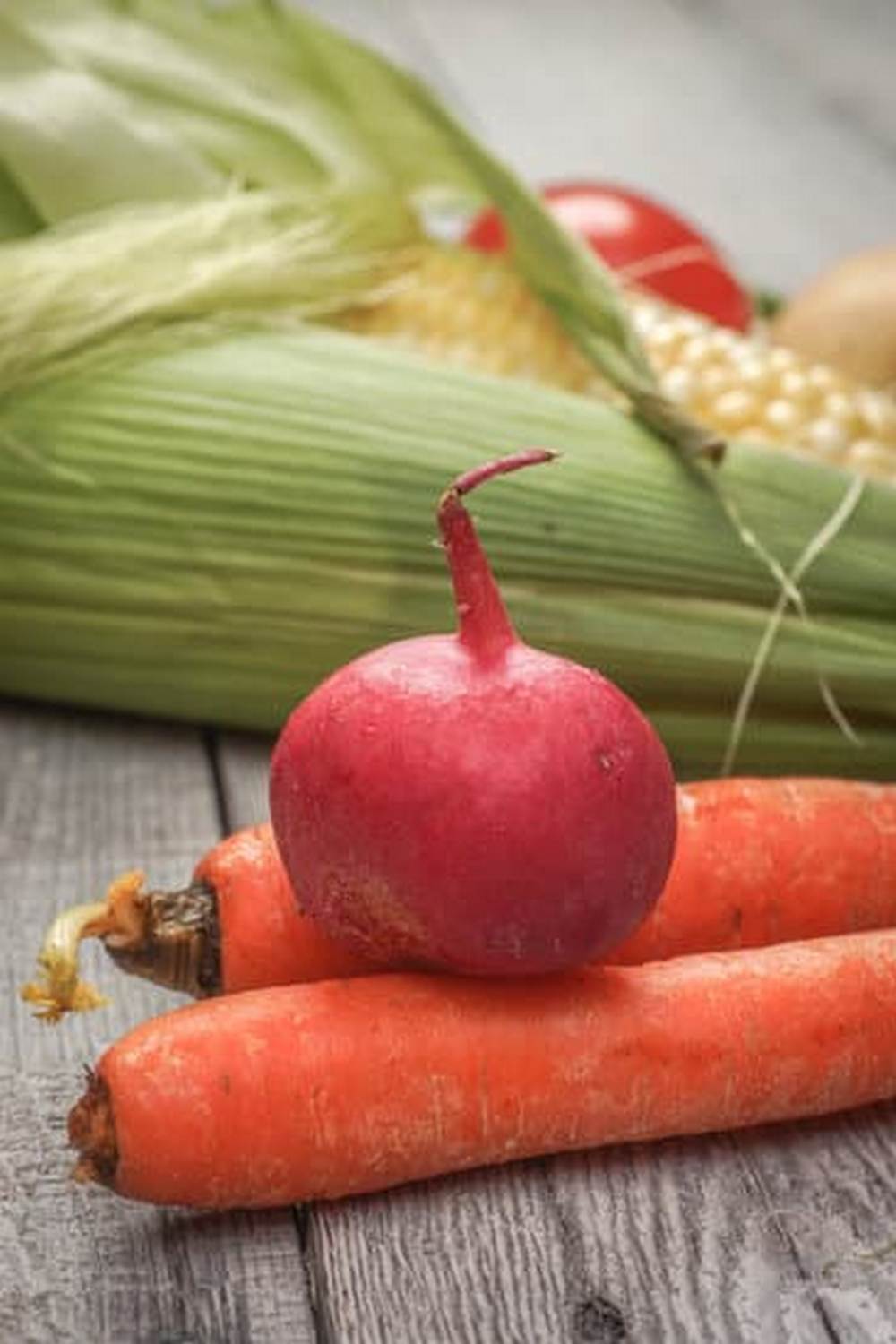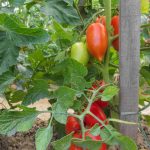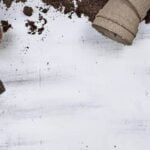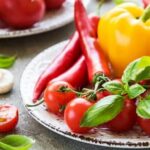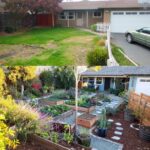Are you looking to start your own vegetable garden at home? One of the first steps in this rewarding journey is learning about gardening vegetable seeds.
Growing vegetables from seeds not only allows you to have a wide variety of produce, but it also gives you a sense of accomplishment and satisfaction as you watch your plants grow and flourish. Whether you are a novice gardener or an experienced one, understanding the ins and outs of vegetable seeds can help you create a bountiful garden.
Starting your vegetable garden from seeds offers numerous benefits. By growing vegetables from seeds, you have more control over the quality and variety of your produce. Additionally, starting from seeds allows you to save money compared to purchasing seedlings. Gardening vegetable seeds also gives you the opportunity to choose heirloom or organic varieties, ensuring that your food is free from harmful chemicals or GMOs.
When it comes to choosing which vegetables to grow from seeds, there are several options that are ideal for beginners. Popular choices include tomatoes, peppers, cucumbers, lettuce, and beans. These vegetables are relatively easy to grow from seeds and can thrive in various climates. By selecting these varieties for your garden, you can enjoy fresh produce throughout the growing season right at your fingertips.
Benefits of Growing Vegetables From Seeds
Cost-Effective and Budget-Friendly
One of the primary benefits of growing vegetables from seeds is that it can be a cost-effective and budget-friendly way to start your garden. Purchasing seeds is usually much cheaper than buying seedlings or established plants.
With a packet of vegetable seeds, you can potentially grow multiple plants, saving money in the long run. This is especially advantageous for those who are just starting their gardening journey and want to experiment with different types of vegetables without breaking the bank.
More Variety and Control
When you choose to grow vegetables from seeds, you have a wider variety of options available to you compared to buying seedlings at a nursery. You can select specific varieties of vegetables based on flavor, size, color, and even disease resistance. This level of control allows you to tailor your garden to suit your preferences and needs. Additionally, starting from seeds gives you the opportunity to try unique heirloom varieties that may not be readily available as seedlings in stores.
Sustainability and Self-Sufficiency
Growing vegetables from seeds promotes sustainability and self-sufficiency in your gardening practices. By starting your plants from scratch, you reduce your reliance on commercial nurseries that may use pesticides or other chemicals in their cultivation process.
You also have the satisfaction of knowing exactly where your food comes from and how it was grown. This hands-on approach to gardening vegetable seeds aligns with the principles of sustainable living as it reduces waste, conserves resources, and fosters a deeper connection with nature.
Best Vegetables to Grow From Seeds
When it comes to choosing the best vegetables to grow from seeds, there are a variety of options that are well-suited for beginners and experienced gardeners alike. Here are some popular vegetables that can be easily started from seeds:
- Tomatoes – Tomato plants grown from seeds tend to be more resilient and flavorful than store-bought varieties. They come in a wide range of colors, shapes, and sizes, making them a versatile choice for any garden.
- Carrots – Carrots are a favorite among home gardeners due to their sweet flavor and versatility in the kitchen. Growing carrots from seeds allows you to choose from different varieties, including traditional orange, purple, and even rainbow-colored carrots.
- Zucchini – Zucchini is a prolific producer that thrives when grown from seed. With proper care and maintenance, zucchini plants can yield an abundance of squash throughout the growing season.
While these are just a few examples of vegetables that can be easily grown from seeds, other popular options include lettuce, bell peppers, cucumbers, and beans. Each of these vegetables offers its own unique flavors and nutritional benefits, making them essential additions to any home garden.
Growing your own vegetables from seeds not only allows you to have control over the quality of your produce but also provides a sense of satisfaction knowing that you played a part in nurturing these plants from seedlings to harvest. Whether you have limited space or an expansive backyard, starting your vegetable garden with seeds is a rewarding experience that can lead to delicious meals straight from your own backyard.
Tips for Starting Vegetable Seeds Indoors
Starting vegetable seeds indoors can be a rewarding and cost-effective way to kick start your garden before the outdoor planting season begins. By taking the time to properly nurture your seedlings indoors, you can ensure a healthy and successful garden once it’s time to transplant them outside.
Choosing the Right Containers
When starting vegetable seeds indoors, selecting the right containers is crucial for their growth. Opt for containers that are at least 2-3 inches deep with drainage holes at the bottom to prevent waterlogging. Biodegradable pots or trays are also a great option as they can be planted directly into the soil without disturbing the roots of your seedlings.
Providing Adequate Light
One common mistake when starting vegetable seeds indoors is not providing enough light for the seedlings. Place your containers in a sunny location, ideally near a south-facing window where they can receive at least 6-8 hours of sunlight daily. If natural light is insufficient, consider using grow lights to supplement their lighting needs.
Monitoring Watering and Temperature
Consistent watering is essential when starting vegetable seeds indoors. Keep the soil moist but not soggy, as overwatering can lead to root rot. Additionally, maintaining a consistent temperature between 65-75 degrees Fahrenheit will help promote healthy seedling growth. Consider using a heating mat if necessary to regulate temperature during germination.
By following these tips for starting vegetable seeds indoors, you can set yourself up for a successful gardening season ahead. Remember to transplant your seedlings outdoors once they have developed strong roots and acclimatize them gradually to outdoor conditions to ensure a smooth transition. Happy gardening.
Choosing the Right Soil for Vegetable Seeds
When it comes to gardening vegetable seeds, choosing the right soil is crucial for the success of your plants. The soil you use can significantly impact the growth and development of your vegetable seedlings. One key factor to consider when selecting soil for vegetable seeds is its texture.
A well-draining soil that retains moisture but prevents waterlogging is ideal for most vegetables. Additionally, the pH level of the soil is important as it affects nutrient availability to the plants. Most vegetables thrive in slightly acidic to neutral soil with a pH range of 6.0 to 7.0.
Another essential aspect to consider when choosing soil for vegetable seeds is its fertility. Vegetables are heavy feeders and require nutrient-rich soil to support their growth. Opt for a high-quality potting mix or create your own by combining compost, peat moss, and perlite or vermiculite. These additives not only provide the necessary nutrients but also improve drainage and aeration in the soil, promoting healthy root development in your vegetable seedlings.
Lastly, ensure that the soil you choose is free from pests, diseases, and weed seeds that could potentially harm your vegetable plants. Sterilized or pasteurized soils are recommended to minimize the risk of introducing harmful organisms into your garden. By investing in good quality soil and providing your vegetables with a healthy growing environment, you set them up for success right from the start.
| Aspect | Recommendation |
|---|---|
| Soil Texture | Well-draining soil with a pH range of 6.0-7.0 |
| Soil Fertility | Use nutrient-rich potting mix or create a blend with compost, peat moss, and perlite/vermiculite |
| Pest Control | Choose sterilized or pasteurized soils to avoid introducing harmful organisms |
Watering and Caring for Vegetable Seedlings
When it comes to gardening vegetable seeds, proper watering and care for seedlings are essential for their growth and development. Water is a crucial element in the life of a plant, especially during the early stages of growth. Seedlings are delicate and require consistent moisture to thrive. Overwatering or underwatering can both have detrimental effects on the young plants.
One important tip for watering vegetable seedlings is to provide them with consistent moisture without overdoing it. It is recommended to water the seedlings when the top inch of soil feels dry to the touch. Proper drainage is also key to prevent waterlogging, which can lead to root rot. Using a watering can with a fine spray or a gentle shower setting on a hose nozzle can help avoid damaging the tender plants.
In addition to watering, caring for vegetable seedlings involves monitoring their growth and health regularly. Keep an eye out for any signs of pests or diseases, such as yellowing leaves or wilting stems. Providing proper air circulation and spacing between seedlings can help prevent issues like damping off. As the seedlings continue to grow, they may need additional nutrients in the form of organic fertilizers to support their development into healthy, productive plants.
| Watering Tips | Caring Tips |
|---|---|
| Provide consistent moisture without overwatering | Monitor growth and health regularly |
| Check soil moisture by feeling the top inch of soil | Watch out for signs of pests or diseases |
| Use a fine spray watering can or gentle shower setting on a hose nozzle | Ensure proper air circulation and spacing between seedlings |
Common Mistakes to Avoid When Growing Vegetables From Seeds
When it comes to gardening vegetable seeds, there are common mistakes that many beginners make that can hinder the success of their seedlings. One of the most common mistakes is overwatering. While it is essential to keep the soil moist, overwatering can lead to root rot and other issues that can harm the plants.
It is important to water your vegetable seeds consistently but not excessively. Checking the moisture level of the soil regularly and adjusting your watering schedule accordingly is key to preventing this mistake.
Another mistake to avoid when growing vegetables from seeds is planting them too deeply or not deep enough. Each seed has specific planting instructions, and deviating from these recommendations can affect germination rates and overall plant growth.
It is crucial to follow the guidelines provided on the seed packet or research the proper planting depth for each type of vegetable you are growing. Planting depth directly impacts how well the seed receives light, nutrients, and water, so getting it right is crucial for successful growth.
Lastly, another common mistake gardeners make when growing vegetables from seeds is neglecting proper thinning practices. When seedlings emerge and start to grow, they will need space to thrive and develop properly. Failing to thin out overcrowded seedlings can result in competition for resources like water, sunlight, and nutrients, leading to stunted growth and poor yields.
Thinning out weaker seedlings allows more room for the healthier ones to flourish. Taking the time to properly thin out your vegetable seedlings will ultimately benefit your garden in the long run by promoting stronger plants with higher yields at harvest time.
Harvesting and Enjoying the Fruits of Your Gardening Vegetable Seeds Labor
After carefully tending to your vegetable seeds, nurturing them into healthy seedlings, and watching them grow into mature plants, the time has finally come to enjoy the fruits of your labor. Harvesting vegetables from your own garden not only brings a sense of satisfaction but also allows you to indulge in the freshest produce possible.
To ensure a bountiful harvest, it is essential to know when each type of vegetable is ready to be picked. Some vegetables can be harvested as soon as they reach a desirable size or color, while others require more time to fully ripen. Creating a harvesting schedule based on the specific varieties you are growing will help you maximize the yield from your garden.
Below are some tips for harvesting and enjoying the vegetables grown from your gardening vegetable seeds:
- Harvest leafy greens such as lettuce and spinach by picking individual leaves rather than uprooting the entire plant. This allows the plant to continue producing new growth.
- For root crops like carrots and radishes, gently loosen the soil around the base of the plant before pulling it out to avoid damaging the roots.
- When harvesting tomatoes, pick them when they are firm and fully colored. Avoid waiting until they become overly ripe on the vine, as this can lead to split fruit or attract pests.
By following these guidelines and savoring each freshly picked vegetable, you will truly appreciate the rewards of growing your own produce from gardening vegetable seeds. Whether eaten raw in salads or cooked into delicious meals, there is no substitute for the taste and nutritional value of homegrown vegetables.
Conclusion
Gardening vegetable seeds is not only a rewarding hobby but also a sustainable practice that contributes to a healthier lifestyle and environment. By starting your vegetables from seeds, you have the opportunity to witness the entire growth process, from germination to harvest, giving you a deeper connection to your food. Additionally, growing vegetables from seeds allows you to choose from a wider variety of plant options, ensuring that you can cultivate produce tailored to your preferences and needs.
Furthermore, gardening vegetable seeds can significantly reduce your carbon footprint by eliminating the need for transportation and packaging associated with store-bought produce. By producing your vegetables at home, you are promoting sustainability through self-sufficiency and reducing the environmental impact of industrial farming practices. This not only benefits the planet but also enhances the nutritional value of your food by providing fresh, organic produce right at your fingertips.
In conclusion, investing time and effort in gardening vegetable seeds is an investment in both your well-being and the health of our planet. Whether you are a seasoned gardener or just starting out, the value of growing vegetables from seeds for sustainable living cannot be overstated. So grab your trowel, select some high-quality vegetable seeds, and embark on this enriching journey towards a greener future for yourself and generations to come. Happy gardening.
Frequently Asked Questions
What Is the Easiest Vegetable to Grow From Seed?
The easiest vegetable to grow from seed would be radishes. They are quick to germinate and mature, making them a great choice for beginner gardeners or those with limited time or space. Radishes also do well in various soil types and climates.
When Should I Start Planting Vegetable Seeds?
The timing for planting vegetable seeds depends on the specific type of vegetable and the local climate. In general, cool-season vegetables like lettuce, peas, and carrots can be started in early spring, while warm-season vegetables like tomatoes and peppers should be planted after the last frost date in your area.
How Do I Start a Vegetable Garden Seed?
Starting a vegetable garden from seed involves several steps. First, prepare the soil by tilling it and adding organic matter for nutrients. Then, plant the seeds at the appropriate depth according to the seed packet instructions.
Water the seeds regularly and provide adequate sunlight for germination. Once the seedlings have sprouted, thin them out as needed to allow proper spacing for growth. Regular maintenance such as watering, weeding, and fertilizing will help your vegetable garden thrive throughout the growing season.

If you’re looking to get into vegetable gardening, or are just looking for some tips on how to make your current garden better, then you’ve come to the right place! My name is Ethel and I have been gardening for years. In this blog, I’m going to share with you some of my best tips on how to create a successful vegetable garden.

